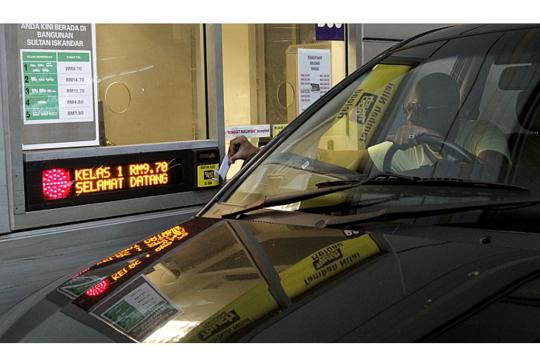Causeway toll changes: is Malaysia's decision revenue-driven?
Causeway toll changes: is Malaysia's decision revenue-driven?

It would be easy to assume that Malaysia's decision to raise tolls for vehicles using the Causeway was a tit-for-tat reaction to Singapore's raising of its entry permit fee for foreign vehicles, which was announced early last month. But that would be too simplistic a conclusion. In this instance, Malaysia's decision looks to be purely revenue-driven.
Singapore's raised vehicle entry permit provided a perfect opportunity for Malaysia to shore up its coffers to pay for various public projects, including the new RM1.27 billion (S$495 million) Eastern Dispersal Link - an expressway that connects the Johor Baru immigration complex to the North-South Highway.
If this were indeed a political spat, there would be other signs: a suspension or slowdown of joint projects such as the MRT extension to Johor Baru and cross-border high-speed rail link. So far, there has been no hint of this.
Also, if it were a tit-for-tat response, the toll rise would apply solely to Singapore cars. But the revision affects Malaysian vehicles, too.
This toll increase is separate from a proposed entry permit fee that Johor said it would apply by the end of this year.
Whatever the motivation, one thing is clear: the higher tolls - more than five times the previous rates for cars, lorries, taxis and buses - will be a royal pain to road users. More so when Singapore eventually matches the increases.
Singapore's principle of matching toll rates goes back to when the Second Link opened in 1998. The Government said then that it was entitled to a share of the toll revenue, having spent $600 million on the project compared with the $200 million Malaysia spent.
To prevent diversion of traffic to the Causeway, tolls were introduced there as well.
While the rates and increases over the years have been fairly gradual, this is not so in the latest round. Traffic is likely to shrink both ways. At present, 13,000 Malaysian cars and 19,000 buses cross over to Singapore daily while 45,000 Singapore vehicles enter Malaysia. (Motorcycles are exempted from the latest toll rise.)
Malaysia must have done its sums to conclude that the drop in traffic - and consequently, tourism spending and possibly future investments - will be marginal or temporary.
Chances are, Malaysians will feel the pinch more, simply because of the stronger Singapore currency.




2 Comments
Recommended Comments
Create an account or sign in to comment
You need to be a member in order to leave a comment
Create an account
Sign up for a new account in our community. It's easy!
Register a new accountSign in
Already have an account? Sign in here.
Sign In Now